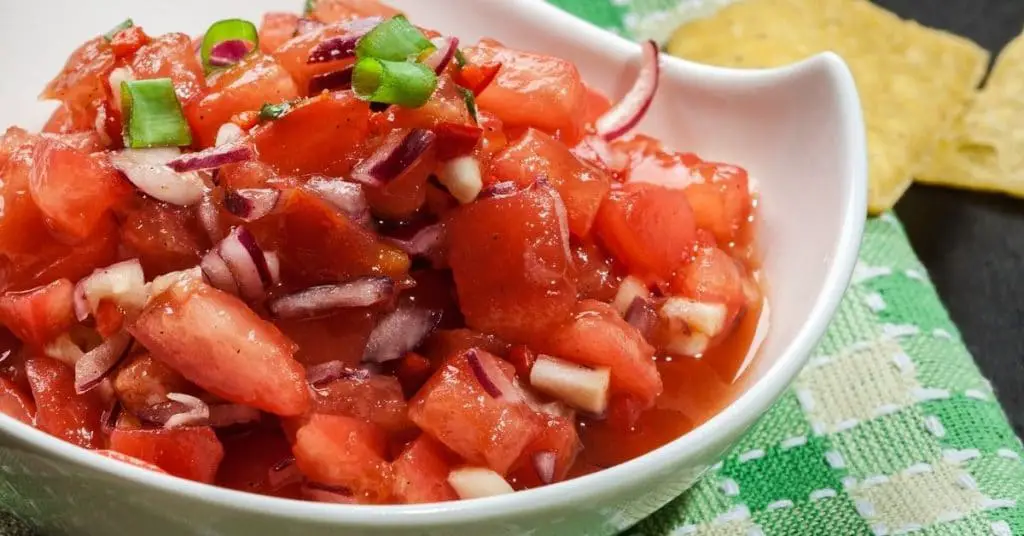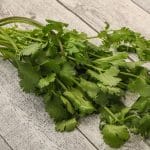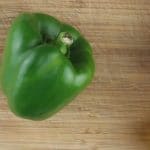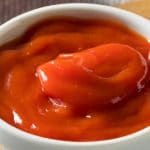Briefly, yes, you can freeze salsa, but it may become watery and lose some flavor, so it is better to use it in cooked dishes and thicken it if needed.
Salsa is such a versatile ingredient with a flavor and texture profile that pair well with a variety of savory dishes. The tomato-based condiment can be made with fresh ingredients including chopped cilantro for a vibrant taste or you can make a spicier salsa with chili peppers, green peppers, and even add some cayenne pepper.
The shelf life of salsa will vary depending on whether it is fresh homemade salsa or canned salsa, but one thing is certain, you don’t want it to go to waste. Luckily, freezing salsa is a good way to extend its shelf life. There are however a few things you need to know before you freeze homemade salsa and how to use thawed salsa for the most delicious recipes.
Here is what you need to know when preserving salsa in the freezer.
Can Salsa Be Frozen?
Yes, you can freeze both homemade salsa with fresh vegetables or store-bought varieties. You can also freeze salsa verde.
The way salsa freezes will depend on the type of salsa you are freezing. When freezing salsa that is made with uncooked tomatoes, the formation of ice crystals damages the fruit cell structure. When you thaw salsa, the frozen tomatoes will break down and become very watery.
If you use canned tomatoes, the mixture will not have much crunch to start. Likewise, when making a warm salsa the crunchy tomato texture will already break down before freezing. Frozen and thawed salsa is best used in cooked dishes such as chili, soup, sauces, or stew.
Regardless of the type of salsa, once thawed you can always drain off any excess liquid to prevent it from being too watery before adding it to your dish. To prevent your tasty salsa from losing too much flavor when draining off the liquid, add a little tomato paste. This will also thicken the consistency.
Alternatively, to thicken salsa, you can add a cornstarch paste to your stew or sauce while cooking. Mix one teaspoon of cornstarch with water to form a paste. Add the paste to your saucepan while stirring continuously over medium heat to thicken.
How To Freeze Salsa
Step 1: Quality Check
When freezing homemade salsa, always check that the quality is still good and not nearing its expiry. We recommend freezing fresh salsa within a day or making it. If the leftover salsa is showing signs of going bad, discard it.
If you have made a cooked variety, let the salsa cool completely before portioning it. There are two methods you can use to portion the salsa.
Step 2: Portion
Method 1
If you are going to use all the salsa at once, pour or scoop it into a ziplock freezer bag. Do not over fill the bag as the liquid components may expand on freezing. Leave at least an inch free at the top. Gently press out any excess air and seal the bag.
Method 2
If you don’t want to defrost the entire batch at one time, you can freeze your salsa in ice cube trays. This way you can remove only enough salsa servings you need at any given time and keep the rest frozen.
Pour the salsa into an ice cube tray and place it in the freezer until completely frozen. Once solid, remove the salsa cubes from the freezer and pack them into resealable freezer bags. Press out any excess air before sealing the ziploc bag.
Step 3: Label and Freeze
Label the freezer safe bags with the date and contents and place it into the freezer.
How To Defrost Frozen Salsa
If you are using salsa in a cooked dish such as a sauce, soup, casserole, or stew, you do not have to thaw it and can just add it straight to the saucepan from frozen.
Keep in mind that you will need to add a few minutes to the cooking time to compensate for the temperature drop.
To thaw salsa for mixing into dips, dressings, or marinades, place it in the refrigerator to thaw overnight. If you find that it has become watery, drain off some of the excess water and adjust the seasoning if needed before adding it to the desired dish.
Types of Salsa
Salsa is popularly known as a Mexican sauce or condiment eaten with tacos and used as a dip for tortilla chips. Besides being enjoyed as a condiment, sauce, or dip at room temperature, salsa can also be added to soups and stews for a depth of flavor, used to marinade meat, mixed into scrambled eggs, grits, and even enjoyed on toast.
There are a wide variety of salsa types. These are the most popular:
Salsa Roja
This red cooked salsa sauce is made with cooked tomatoes, onion, garlic, and chili peppers. To make your own homemade salsa roja you can also use canned tomatoes.
Salsa Fresca
Also called pico de gallo, this fresh salsa uses fresh tomatoes, onion, garlic, and jalapeno peppers.
Salsa Verde
Salsa verde is a green salsa and uses tomatillos instead of red tomatoes as the condiment base.
Fruit Salsa
Usually a chunky salsa, these include a mango salsa, pineapple, or peach salsa with a fruit base rather than tomatoes. To make a really delicious salsa, add a dash of freshly squeezed lime juice.
FAQs
Conclusion
Regardless of whether you made your own salsa, bought it fresh, or in a jar; freezing salsa can extend its shelf life, save you money, and save on food waste.
Salsa is really easy to freeze. Just make sure that it is well protected from contact with air and moisture which will cause freezer burn and spoil the product.
Add the salsa straight from the freezer to cooked dishes, or thaw and drain it first. Either way, once you realize how many ways you can use and repurpose deliciously salty tangy salsa, you will never want to have a salsa-less freezer again.
Up next: Can you freeze alfredo sauce?
*Image by fotek/depositphotos









